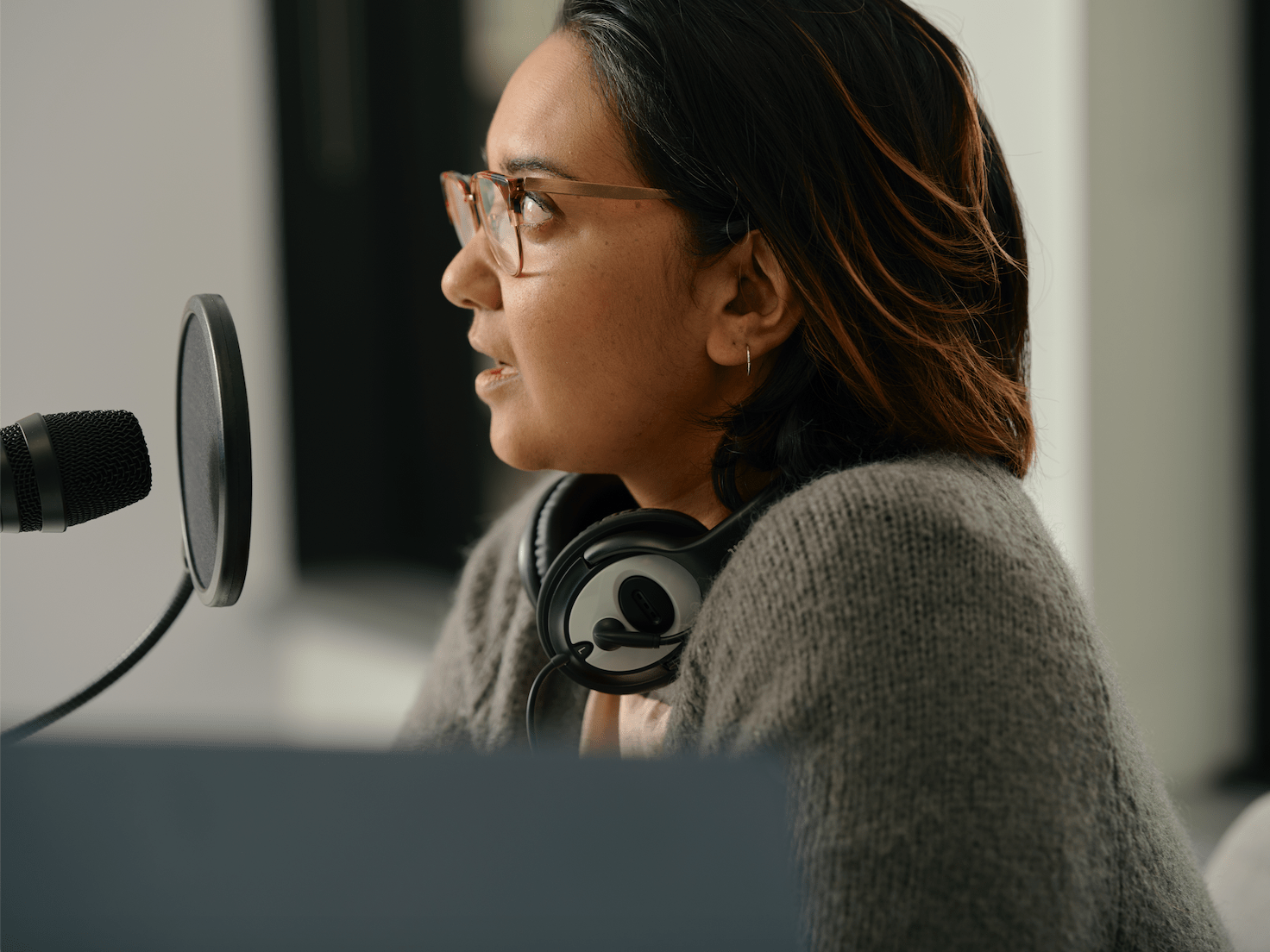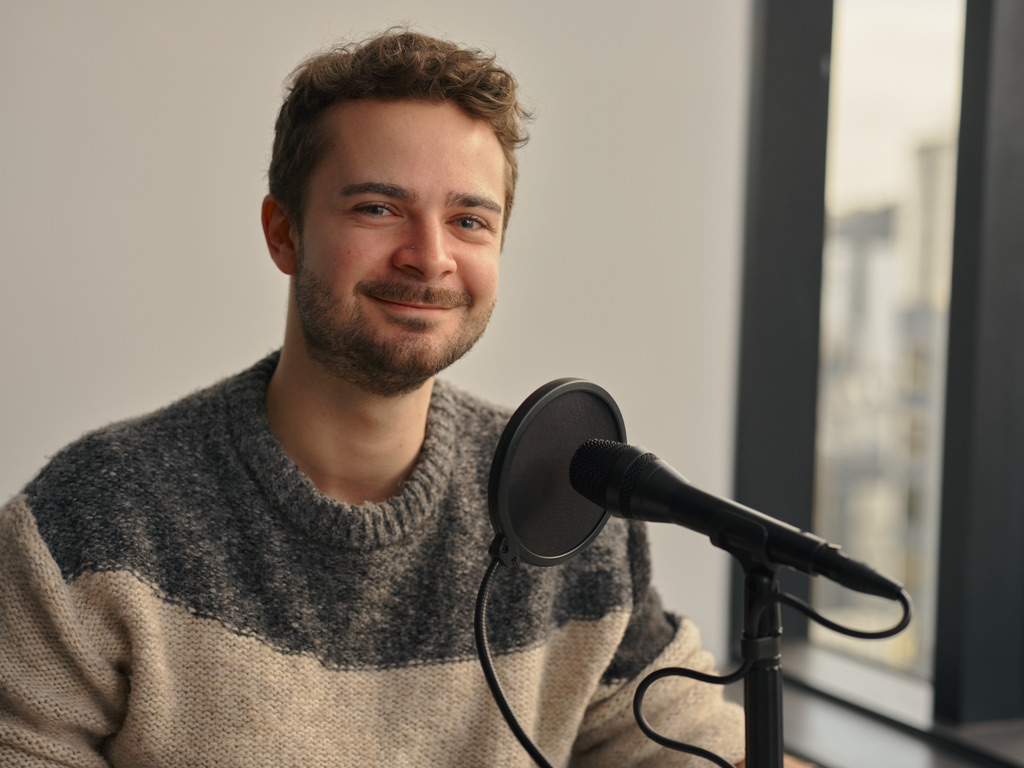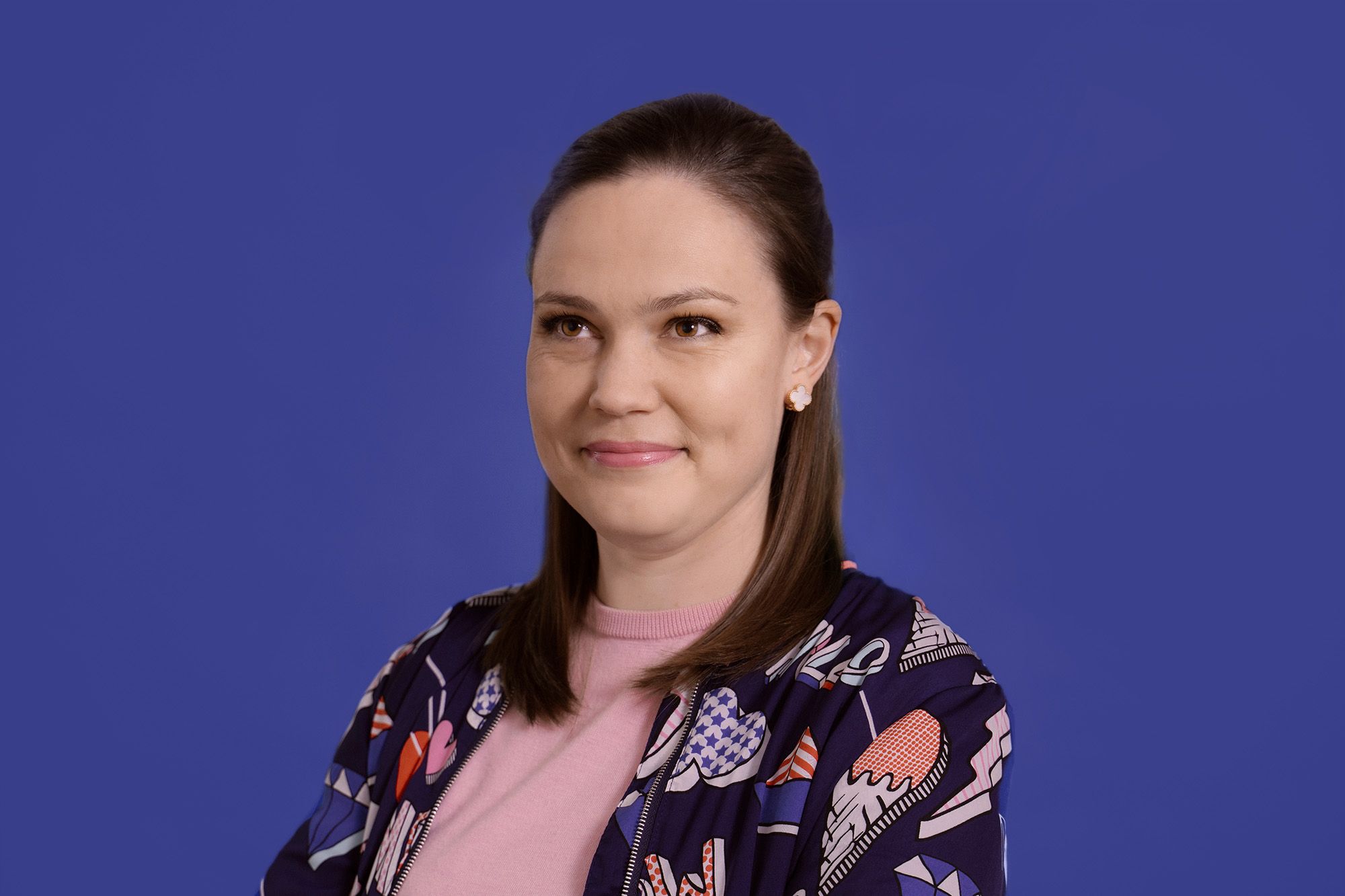
Combining a love of drama and writing to bring NZSL to blind children, Audio Describer Anjula worked on The Kids of Kōrero Lane, a new show for tamariki which aims to raise awareness of and teach NZSL to the future generations of Aotearoa. Here’s an insight into Anjula’s journey and process.
Kia ora Anjula, can you tell us a bit about yourself and your journey to Able?
I started working here about 4 years ago. I took a year off for maternity leave and I’ve been working part-time since – I really enjoy working here. Before I worked at Able, I was studying at Auckland University and got a degree in English and Drama. Being an audio describer is basically the job that marries my skills in drama with writing – it’s a dream job!
Did you know about audio description and closed captioning before you started?
I did know a little about audio description because my mother-in-law is blind and she and I have talked about it before. Prior to working at Able, I was unaware that audio description was available here in Aotearoa. My mother-in-law lives in Ohio in the US – so I knew it existed there; but not here in Aotearoa. It wasn’t until I began working here at Able that I really had the opportunity to talk to my mother-in-law about it and really learnt about audio description in depth, and how it works as well as providing another opportunity to connect with her.
It was so great to hear a user’s experience of audio description first-hand, and what my mother-in-law does and doesn’t like. We do have our own style of audio description here at Able; but I feel like hearing her input and what it’s like for a blind person to use audio description influences me a little to describe things as best as I can.
I’ve heard that you’ve been audio describing The Kids of Kōrero Lane. Can you tell me about what your experience working on it was like and what challenges were there?
It’s a really interesting show to audio describe because there’s so much to describe. There’s signing as well as visuals, and the signing is teaching me NZSL! One thing that I found really interesting is that it’s not the typical type of audio description we do, and I have discovered the NZSL dictionary website through working on this. The website has been so helpful as I want to make sure that I’m describing what’s being signed on screen correctly. I trust my eyes! I trust them a lot but I want to make sure I’m doing the best I can when giving audio description, so having the website as a reference has been great.
The good thing about this show is they go over everything at the end and there is often space to describe everything about the sign as much as we can then. I do wish we had more time to describe little things such as the hand the person uses to make the sign or even smaller nuances in body language that I can see when these kids are signing.
Another challenge was deciding what to describe because normally we describe who the person is, what they look like, what they are wearing, and what environment they are in. But in this show, it’s more important that the signing is described. Picking out small things about the environment when there was space to, in order to give those using audio description context about where the kids were was one of the challenges.
I feel like my brain has had to work differently and think carefully about the fastest and most specific way to describe the signs. I’ve had to hone in and think about what I’m describing more often than I usually would. Again, the NZSL Dictionary website has been really helpful with this as it’s got videos of the sign being used in a sentence so I can see how it would flow in context.
Another challenge has been describing things in a way that a child will listen to and understand. I don’t want to cram fifty or so words into a sentence to describe something, otherwise, a child listening to the audio description might just switch off because it’s too much information to take in or coming across too quickly. Being mindful of how and what’s being described is so important.
In general, what is it like describing a kids show versus a more run of the mill adult show?
Making things simple is a core part of audio describing tamariki content. Another thing is repetition, as that is often a huge component of kids’ shows – it’s how kids learn. Knowing that repetition is important, I make sure I describe it but in a way that’s not too boring. I just try to keep in mind the age group the show is aimed at and try to adapt my language to that. It helps that I’ve got small children of my own so it’s natural to me!
Do you find that there’s a balance between using language that kids of the age group a show is aimed at would understand versus talking down to them?
Yes, part of this is making sure that I use words that I feel strongly a kid of that age range would understand. I do err on the side of assuming that they can understand rather than that they can’t understand. Even as an adult, there are things we don’t always know! The child may have to ask an adult what a word means but we don’t want the audio description to interfere with the tone of the show.
I think it’s awesome that there’s a show that shows NZSL on TV, and the five-minute length is great. It’s like learning another language and I’ve been picking up some things as I’ve been working on it. I think it’ll be really effective for someone who watches it whenever it’s on to pick up some NZSL.





